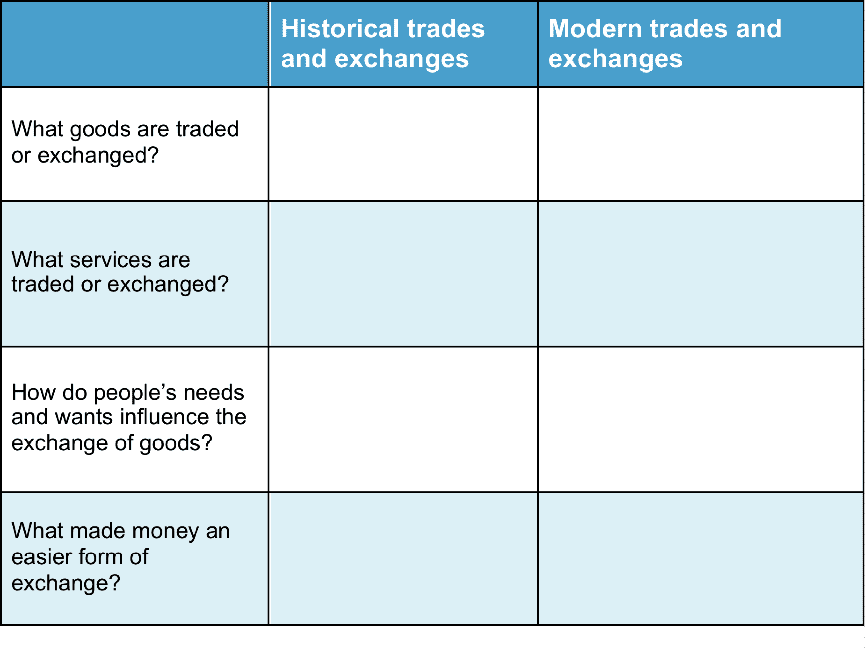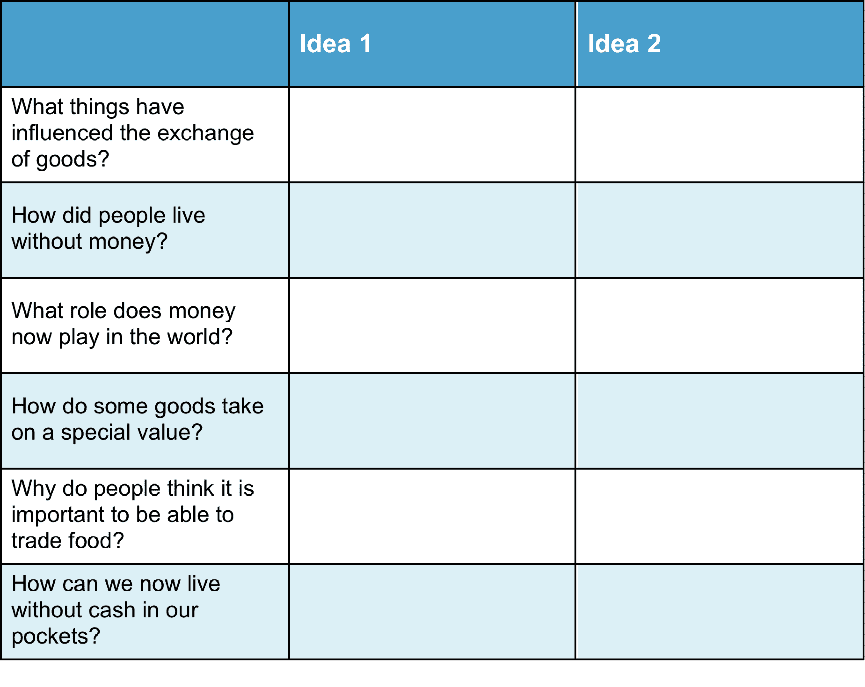Information for Teachers
Curriculum links
This investigation is linked to the following C3 Social Studies Standards for Grades 3–5.
D2.Eco.3.3–5. Identify examples of the variety of resources (human capital, physical capital, and natural resources) that are used to produce goods and services.
D2.Eco.4.3–5. Explain why individuals and businesses specialize and trade.
D2.Eco.5.3–5. Explain the role of money in making exchange easier.
How to search the internet
1 Keep your request short
Fewer words will give a more accurate search.
2 Choose exactly what you want
For example: Arctic Circle Climate
3 Use quotes
Double quotes around a set of words tell the search engine to consider those exact words in that exact order without any change. For example: “Arctic Circle Climate”
4 Use the plus sign (+)
If you add a plus sign (+) between words, the internet will search for all the words. For example: migrate+birds+whales+mammal
5 Use the minus sign (–) to say what you don’t want
Use a minus sign (–) to show words you do not want to appear in your results. For example: if you search for burrowing animals and do not want mammals in your search, –mammals will exclude mammals. Note that you need to put a space before the minus sign for the word to be excluded.
6 Be very clear about what you don’t want
Part 1
Ask questions and define problems
After reading Money: Where Does It Come From? you may have many questions about what people have used to buy or exchange goods.
List your questions
- Compare your list with questions that others have.
- Choose a question you would like to investigate.
- You can work alone, with a partner, or in a small group.
You may want to choose one or more of these questions to investigate
Q1. Why do people want to produce and exchange goods?
Q2. How has money made exchanges of goods easier?
Q3. How has the consumption of products connected people in different parts of the world?
Go to Part 2 Investigate →Part 2
Investigate
Helpful websites
You may want to use websites to help with your investigations.
You can skim definitions of key words like barter, exchange of goods in different cultures:
You can look for the history of coins by searching:
Ancient+coinage
You can search a timeline for the history of paper money:
Money+paper
Go to Part 3 Record data →Part 3
Record data
Find a way of recording your information that will allow you to see any patterns in the data.
Data Chart for Money: Where Does It Come From?
(Download and change to suit your information)
 Download Chart
Download Chart
Go to Part 4 Organize, analyze, and interpret data →
Part 4
Organize, analyze, and interpret data
1. Look over the information you have gathered and the patterns you have found.
Why do people exchange goods?
Why does money make exchange easier?
2. Search for other patterns.
How has the consumption of products connected people in different parts of the world?
3. Makes notes about what you find.
Go to Part 5 Present and share →Part 5
Present and share
Look over all of the information that you have gathered in your investigation.
What are the most important ideas about your topic?
Make a chart showing the most important ideas.
 Download Chart
Download Chart
← Return to menu